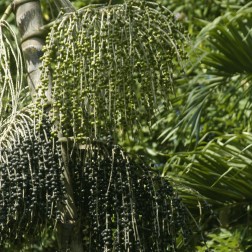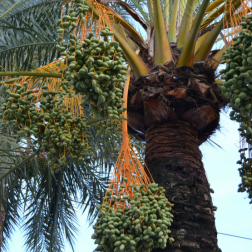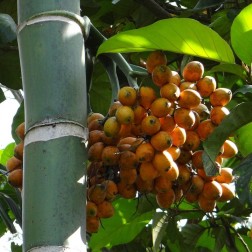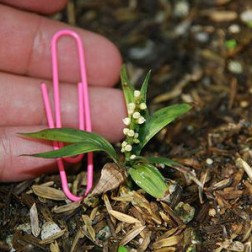They give us some much-needed shade during long lazy beach days, they create awesome photo backdrops for fun beach selfies, and they even create food! But there’s a lot more to these tropical treasures than meets the eye. To prove it, here are five fascinating facts about palm trees.
1. They’re ancient.
Palm trees can live to be hundreds of years old. So even if you planted a palm tree when you were a tiny baby, there’s still a very good chance it will outlive you!
Technically, palm trees are even older than pine trees, which can grow for thousands of years.
This is because like most trees, pines go through a secondary growth phase and replace all their old cells with new ones. But palm trees don’t go through a re-growth phase. This means a 500-year-old pine tree could be made up of two sets of 250-year-old cells, but the palm tree would be made of 1 set of 500-year-old cells.
2. They love the shade.
Really? Despite being well-known for being found in sunny beach locations, most varieties are perfectly happy growing in the shade and the younger palms even prefer it.
Planting a young palm tree under the shade of an older one is a great way to protect its delicate leaves until they’re strong enough to handle the heat.
3. It’s not all coconuts.
-

-
Açaí palm
-

-
Date Palm
-

-
Betel Nut Palm
Not all palm trees produce piña-colada-perfect coconuts. Some species create other delicious treats, like dates and acai berries. Some palms produce toxic nuts and seeds than can hurt your skin or poison you if you eat them. The Arenga and Caryotas species grow dangerous seeds containing oxalate which sting terribly if you touch them.
Nuts from the Betel Nut palm tree are commonly eaten by people in Thailand, despite them seriously damaging teeth and having addictive qualities.
It’s always better to be safe than sorry, so check what type of palm tree you’re dealing with before you dig in!
4. We need to take care of them.
One species of palm tree is so endangered that there is only one left. That’s right, a single tree. Before it became the loneliest palm tree in the world, the Hyophorbe Amaricaulis was found exclusively on Mauritius where it thrived in the mountains. Today, the last remaining specimen of the tree is protected on the island nation by the Curepipe Botanic Gardens.
Sadly, it’s only a matter of time before the beautiful species becomes extinct, which is why we need to take care of the palm trees around us before history repeats itself.
5. One size doesn’t fit all.

The size of palm tree varies hugely according to the species. The average palm tree is 32-50 feet tall, which sounds pretty impressive, right?
The tallest species of palm tree in the world is the wax palm which can grow to a staggering height of 200 feet in its native home of the Andes.

Dypsis Minuta Palm. Source: Palmpedia
The smallest palm in the world is the Dypsis Minuta – a tiny species endemic to Madagascar that rarely grows over 12 inches.
The next time you’re relaxing on the soft golden sand enjoying the much-welcomed shade and the gently swaying fronds, remember that there’s a lot more to the wonderful tree than a bit of free shade and an Instagram shot guaranteed to get you some extra likes.
Learn about palm trees and every beach topic under the sun from 30A.com because we ❤ the beach!
 NICOLA QUINN is a British freelance writer based on the island of Tenerife in the Canary Islands. During the week she knuckles down and gets the job done, but on the weekend she spends her time soaking up the sunshine on the little volcanic island she calls home.
NICOLA QUINN is a British freelance writer based on the island of Tenerife in the Canary Islands. During the week she knuckles down and gets the job done, but on the weekend she spends her time soaking up the sunshine on the little volcanic island she calls home.

